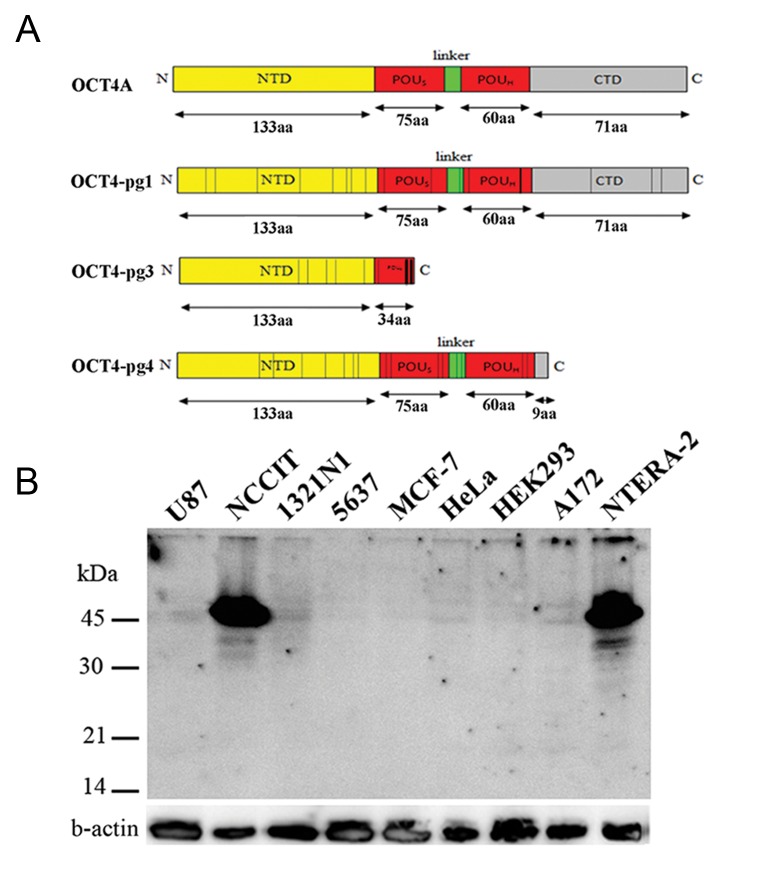Fig.2.
A. A schematic view of OCT4A protein structure, along with predicted protein structures of OCT4-Pg1, OCT4-Pg3, and OCT4-Pg4. The putative OCT4-Pg1 protein is similar to OCT4A, containing intact NTD, POU domain and CTD. OCT4-Pg3 can potentially produce a truncated protein with NTD and a part of the POUs domain. The predicted OCT4-pg4 protein contains NTD and POU domain, but lacks a large part of the C-terminal domain. Vertical lines within the depicted structures of OCT4 pseudogenes indicate the position of point mutations which have changed the amino acid sequences of the predicted proteins and B. Western blotting in different human cell types transfected with OCT4-Pg1, OCT4-Pg3 and OCT4-Pg4 expression vectors. The NCCIT and NT2 cell lines were used as positive controls for OCT4A, while U-87MG was used as a negative control for OCT4A and OCT4 pseudogenes. Using the sc-5279 antibody, we detected OCT4A protein exclusively in NCCIT and NTERA-2 cell lines but did not detect OCT4 pseudogenes in the cells which expressed them at the transcript level. Note that the internal control b-actin protein is detectable at similar intensities in all examined cell lines.

